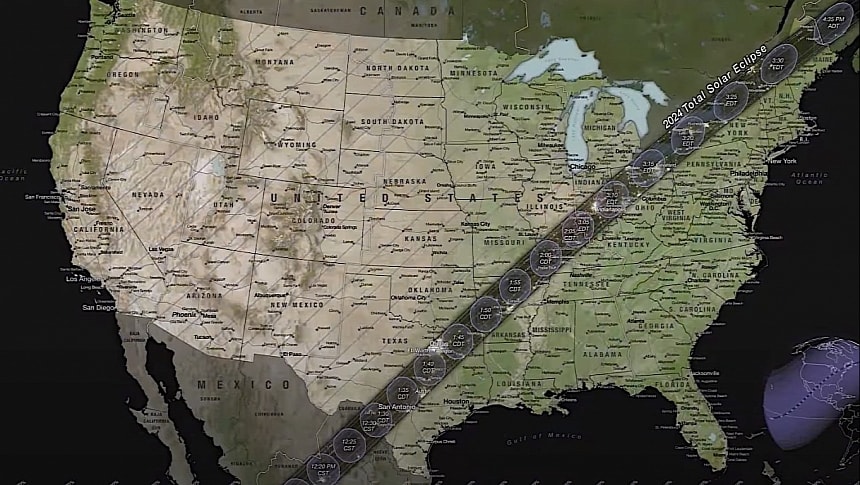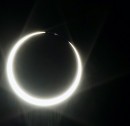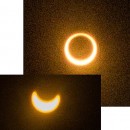I'm pretty certain many of you out there, just like me, are most of the time under the impression the Sun is perfectly round, just like the Earth. That's because when looked at from a certain perspective, they both look like perfect spheres.
But neither the Earth nor the Sun are perfectly round, and neither are all the other celestial bodies in the solar system. Our planet, for instance, is technically an irregularly shaped ellipsoid, while the Sun, well, the Sun is of an undefined exact shape for the time being.
We do know the Sun is much closer to a perfect sphere than Earth. That's because its equatorial diameter and the polar one are almost perfectly equal. Yet the star does not retain its round shape, because its rotation tends to bulge it outward at the equator.
Knowing the exact shape of the Sun, or more to the point exactly how far it deviates from a perfect sphere, could help us a lot with our understanding of the Sun’s interior and could give theories of gravity a nudge in the right direction. The problem is, looking at the Sun directly is not an easy thing to do in normal circumstances.
Luckily, there is a total solar eclipse around the corner. On April 8 the Sun will perfectly hide behind the Moon in a celestial spectacle that will be visible all over North America, with perfect totality being experienced on a strip running from Texas to Maine.
It is the people living in these totality areas who could lend NASA a bit of help with determining the exact shape of the Sun. To enlist their help the agency created a special app called SunSketcher, and urges everyone living in those areas (check main photo for details on that) to use it.
The app will allow people to create a movie of the eclipse, including by tracing “tiny slivers of sunlight that pass through the valleys on the surface of the Moon.“
These slivers are known among space enthusiasts as Baily's beads and are features of eclipses. They are in effect beads of sunlight shining through the rugged terrain of some areas of the Moon as it blocks the Sun, in diamond ring shapes.
Once the event is over an NASA has all the images, it will combine them with precision maps of the Moon, created over the years by the Lunar Reconnaissance Orbiter, to measure the Sun's size and shape precisely.
Those interested in taking part in this massive collective effort of space exploration can enlist to receive updates at this link. Once you do, we also recommend having a look at the video below to better where the eclipse will be in April.
We do know the Sun is much closer to a perfect sphere than Earth. That's because its equatorial diameter and the polar one are almost perfectly equal. Yet the star does not retain its round shape, because its rotation tends to bulge it outward at the equator.
Knowing the exact shape of the Sun, or more to the point exactly how far it deviates from a perfect sphere, could help us a lot with our understanding of the Sun’s interior and could give theories of gravity a nudge in the right direction. The problem is, looking at the Sun directly is not an easy thing to do in normal circumstances.
Luckily, there is a total solar eclipse around the corner. On April 8 the Sun will perfectly hide behind the Moon in a celestial spectacle that will be visible all over North America, with perfect totality being experienced on a strip running from Texas to Maine.
It is the people living in these totality areas who could lend NASA a bit of help with determining the exact shape of the Sun. To enlist their help the agency created a special app called SunSketcher, and urges everyone living in those areas (check main photo for details on that) to use it.
The app will allow people to create a movie of the eclipse, including by tracing “tiny slivers of sunlight that pass through the valleys on the surface of the Moon.“
These slivers are known among space enthusiasts as Baily's beads and are features of eclipses. They are in effect beads of sunlight shining through the rugged terrain of some areas of the Moon as it blocks the Sun, in diamond ring shapes.
Once the event is over an NASA has all the images, it will combine them with precision maps of the Moon, created over the years by the Lunar Reconnaissance Orbiter, to measure the Sun's size and shape precisely.
Those interested in taking part in this massive collective effort of space exploration can enlist to receive updates at this link. Once you do, we also recommend having a look at the video below to better where the eclipse will be in April.







